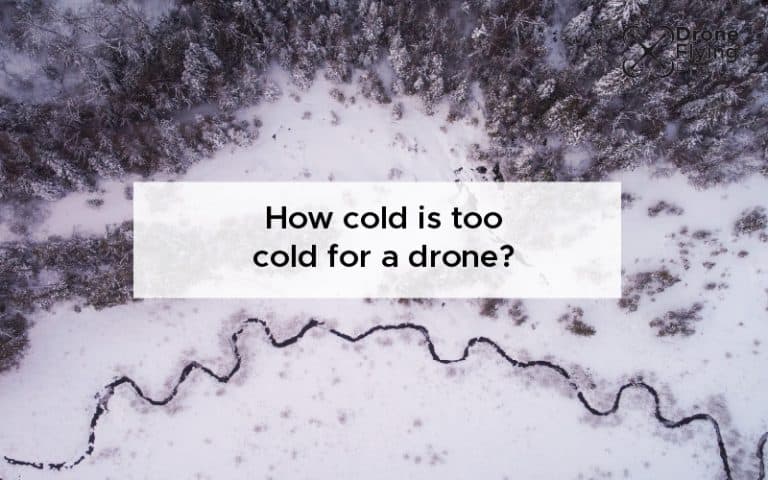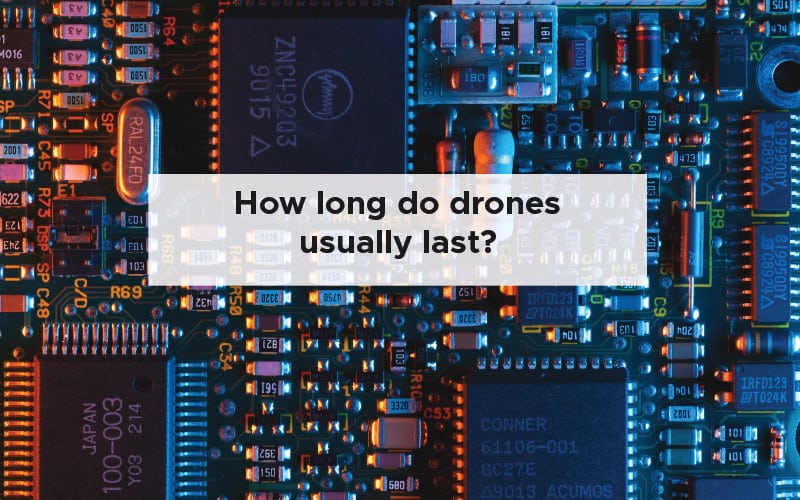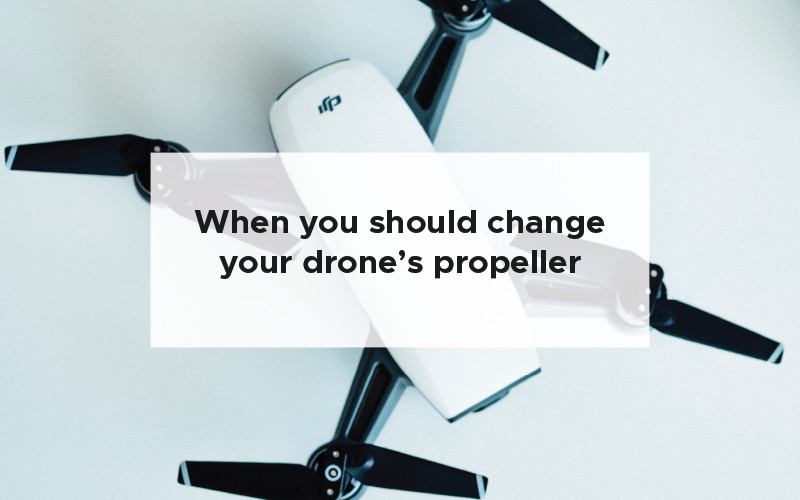Even where I live in Australia, it can get pretty cold in the winter. I often do not fly my drone in cold temperatures because I don’t want to be out in the cold weather for a very long time. I am a bit of a wimp. However, there are some other technical reasons why you shouldn’t fly your drone in extremely cold temperatures.
Do not fly your drone in temperatures below 0°C (32°F). At these temperatures, the discharge rate of the batter is faster, which can damage the lithium polymer battery. Warm up your drone before flying, to approximately 25°C (77°F), for a safe flight.
You can capture some incredible shots of a winter scene using your drone. The pristine white of fresh snowfall makes it perfect for capturing stunning winter photos and videos.
Most drones are not designed to be flown in extremely cold weather conditions. Ice, snow, and cold winds can easily damage your drone’s internal components at these temperatures.
The lithium-polymer battery of many drone models is extremely sensitive to fluctuations in temperatures. The lifetime of your battery can be reduced by as much as 50% in extremely cold weather.
Besides the battery, there are many other considerations. For example, the circuit board and materials that the drone is made from will dictate the lowest operating temperature for your drone.
Most drone manufacturers will provide a safe operating temperature range for their drones, and some of the most common drones are shown in the table below.
| Drone | Operating temperature |
|---|---|
| DJI mini SE | 0° to 40°C (32° to 104°F) |
| DJI Mavic Air 2 | -10° to 40°C (14° to 104°F) |
| DJI mini 2 | 0° to 40°C (32° to 104°F) |
| DJI Mavic air 2S | 0° to 40°C (32° to 104°F) |
| DJI Mavic 3 | -10° to 40° C (14° to 104° F) |
| Evo Nano | 0° to 40°C (32° to 104°F) |
| Evo 2 Pro | -10° to 40° C (14° to 104° F) |
| Parrot Ananfi | +40°C (humid heat) +50°C (dry heat) -10°C |
In the table above, you can see that the majority of consumer drones can be flown between 0° to 40°C (32° to 104°F).
If you are looking for a drone that needs to be flown in temperatures below 0°C, you should choose the Parrot Anafi, the Evo 2 Pro, the DJI Mavic 3 or the DJI Mavic air 2.
Even though these drones can be flown in colder temperatures, you still need to make sure that the drone is looked after properly. Looking after the drone means warming up the motors and taking care of the lithium polymer battery.
This article will go through all of the issues that can occur when you fly your drone in cold weather and the top tips and tricks for making your drone flight safe for you and your drone.

Issues flying in cold weather
It is not ideal to fly your drone on the outer limits of its operating temperatures. The moment you put stress on your drone is when you are wearing the drone’s components and quicker, and you are running the risk of the drone running out of battery much sooner than you expect.
Here are all of the issues that you can expect to encounter if you are flying your drone in temperatures outside of its normal operating range or at the extremes of the manufacturers stated operating temperature range.
Circuit board issues
Cold weather can affect the internal circuit board of your drone and cause complete failure.
Typically we do not want our drone circuit boards to get too hot during operation. Still, if they drop below a critical temperature, the circuit board can freeze and cause serious irreparable issues.
Strange things can happen once circuit boards and electronic components drop below freezing.
Circuit boards and electronics can suffer sudden failure at extreme temperatures. Any of the electronics in the drone that rely on movements such as motors and other servos can suffer failure in the cold. As the temperature drops, the metal contracts making moving parts run under higher load stress which can cause the parts to fail.
The cold temperatures are much more likely to impact drone motors as they are running incredibly fast at approximately 5000 revolutions per minute.
The electronic components in the drone are typically metal and exposed to the environment. This material makes it a perfect location for condensation to collect and cause moisture-related failure.
Condensation
The colder temperature of your drone will potentially cause moisture to condensate. The condensation produced by cold metal coming into contact with humid air can cause issues with shorting and rusting with your drone.
Once the drone is airborne, it will quickly heat up, and the components will no longer be cold enough for moisture to collect on the metal components.
One way of ensuring your drone does not collect condensation is to wait for the drone to warm up for a few minutes after being turned on. Never fly your drone if it has the potential of getting wet.
Also, the lower temperatures may have caused dew and snow to form on the blades of grass and overhanging tree branches.
Be careful that your takeoff spot is clear of moisture and that any air turbulence caused by flying your drone near trees and other overhanging items does not release any potential droplets of water onto the frame of your drone.

Battery issues
Lithium polymer batteries are a very important innovation for drones and have allowed much longer flight time due to their lightweight and high energy capacity.
Not only do low temperatures affect the lifetime of the battery they also perfect the performance.
A study published in 2011 looked at lithium polymer batteries for satellite components that are operated at incredibly low temperatures.
The lithium polymer batteries were temperature cycled in a vacuum from -20° C to room temperature.
They noticed that the gel inside the battery was frozen, which increased the cell’s internal resistance.
Waiting for your drone battery to heat up for operating and flying will help the battery perform at its best with minimal resistance.
In a low-temperature environment, the activity of the lithium ions are reduced, and the lithium polymer battery discharge capacity will also be weak, and that used time will be shortened. If the lithium polymer battery is used in a low-temperature environment for a relatively short period, the damage is only temporary and does not permanently damage the battery capacity. However, the performance will not recover if you use the battery for a long time in low-temperature environments.
Charging and discharging your battery in low-temperature environments is the quickest way to irreversibly damage the battery capacity since the metal lithium will become separated from the battery’s internal components, causing it to shut down automatically.
Charging and discharging in low temperatures
When charging your lithium polymer battery in low temperatures, it is best to carry it out at room temperature of 5°C or above.
If your drone and battery are below 0°C, do not charge and wait for it to return to room temperature.
Using the manufacturer’s charger is recommended as they typically have proprietary software and smart charging algorithms that protect the sensitive internal components of the lithium polymer battery.
While discharging, the battery should be insulated to ensure that the battery’s body is kept above 10° C.
After placing the battery into the aircraft, check the remaining battery power and check whether the voltage information is normal. Compared with room temperature, the battery life will be significantly shortened in a low-temperature environment.
After the low battery alert, you should return the drone to the takeoff and landing spot as soon as possible.
Plastic and frame issues
The drone’s plastic and frame material may become even more brittle in low-temperature conditions. A drone frame and propeller are primarily made of plastic high impact polystyrene and Acrylonitrile butadiene styrene.
If you want to know more about what drones are made from, check out my other article – click here.
These materials are chemically resistant and have a high hardness and rigidity.
Drone bodies are created and manufactured via injection moulding technology which allows the drone bodies to be made quickly and in almost any shape.
The plastic used on the drone frame will become increasingly brittle as the temperature plummets.
The increased brittleness of the frame will increase the chances of the frame coming damaged on heavy landings or if the drone accidentally bumps into something in the surroundings.
Propeller issues
A drone’s propellers are like tires on a car, and they are designed to be replaced.
Low temperatures could significantly impact the likelihood of stress fractures and chipping by quickly coming into contact with branches or debris.
It would help to replace a propeller as soon as you experience any significant noise or colour changes.
Before flying my drone, I often run the sensitive parents of my fingers over the top surfaces of the propeller and run my fingernails down the leading and trailing edge.
I find that my fingers are the perfect implement for uncovering even the smallest of defects to the propeller’s edge and surface.
Issues with Remote
Many drones also come with rechargeable remote controls that contain lithium-ion or lithium polymer batteries.
Both the lithium batteries can be damaged by low-temperature operation.
The remote control may also be susceptible to the same low-temperature brittleness as the drone’s frame and may break more easily.
A drone remote has extendable antennas and joysticks that can be screwed on and off. Performing these actions in low temperatures increases the risk of breakage.
Phone/tablet shutting down
Many drone remote controls utilise a smart device or tablet for displaying the live video feed from the drone.
Many phone manufacturers now utilise lithium polymer batteries and have their own safe operating temperatures. Unlike a drone, the phone and smart device is likely to turn itself off if it senses an unsafe temperature.
The last thing you need is for your smart device to switch itself off automatically during your flight, especially if the battery capacity is reduced, as in the case of low-temperature operation.
Ensure that you set a return to home location so that your drone can return safely if you lose connection via your smart device.
Pilot risk
Lastly, drone pilots are the last to think of their safety when the flight mission is exciting and important.
Spending only 20 minutes (the typical lifetime of a drone battery) in extreme temperatures can very quickly cause serious illness.
Cold exposure can occur in weather that is not freezing. Wind and humidity effects can also remove body heat and lead to hypothermia.
The cold primarily affects the body’s extremities, such as hands and feet. Having your hands on the remote control and having your attention on the first-person view video display is the perfect storm for a cold-weather injury of your fingers.
Cold weather injuries include early-stage frostbite, where the top layers of the skin tissue have become frozen, and it is mostly reversible. It occurs in the cheeks, earlobes, fingers and toes.
If you notice any numbness or your top layer of skin starts to become hard and rubbery or white and waxy, you should quickly read warm the area gently by blowing warm air on it or placing it against a warm body part.
To prevent cold exposure illness, you should:
- where several layers of loose clothing
- where gloves and hat
- make sure your ears, face, hands and feet are protected at all times
- moved to a warm location periodically to limit the amount of time outside on extremely cold days
- avoid touching cold metal surfaces with skin.
Following these simple tips will allow you to fly your drone in cold temperatures and retain all of your fingers and toes for flying another day.
Tips for flying your drone in cold weather
If you want to fly your drone in cold weather, here are my top tips for ensuring that you can do it safely and that you and your drone survive for your next drone flying action.
- Warm up the battery
- only used fully charged batteries
- hover for one minute to allow the battery to warm up
- continually check battery levels for a safe return
- avoid flying in strong wind and rain
- avoid flying in snow
- ensure that your return to home GPS location is set
- ensure that you have a strong GPS signal before taking off
- stay warm by wrapping up your fingers
- avoid quick changes to your speed or direction and go easy on the throttle.






